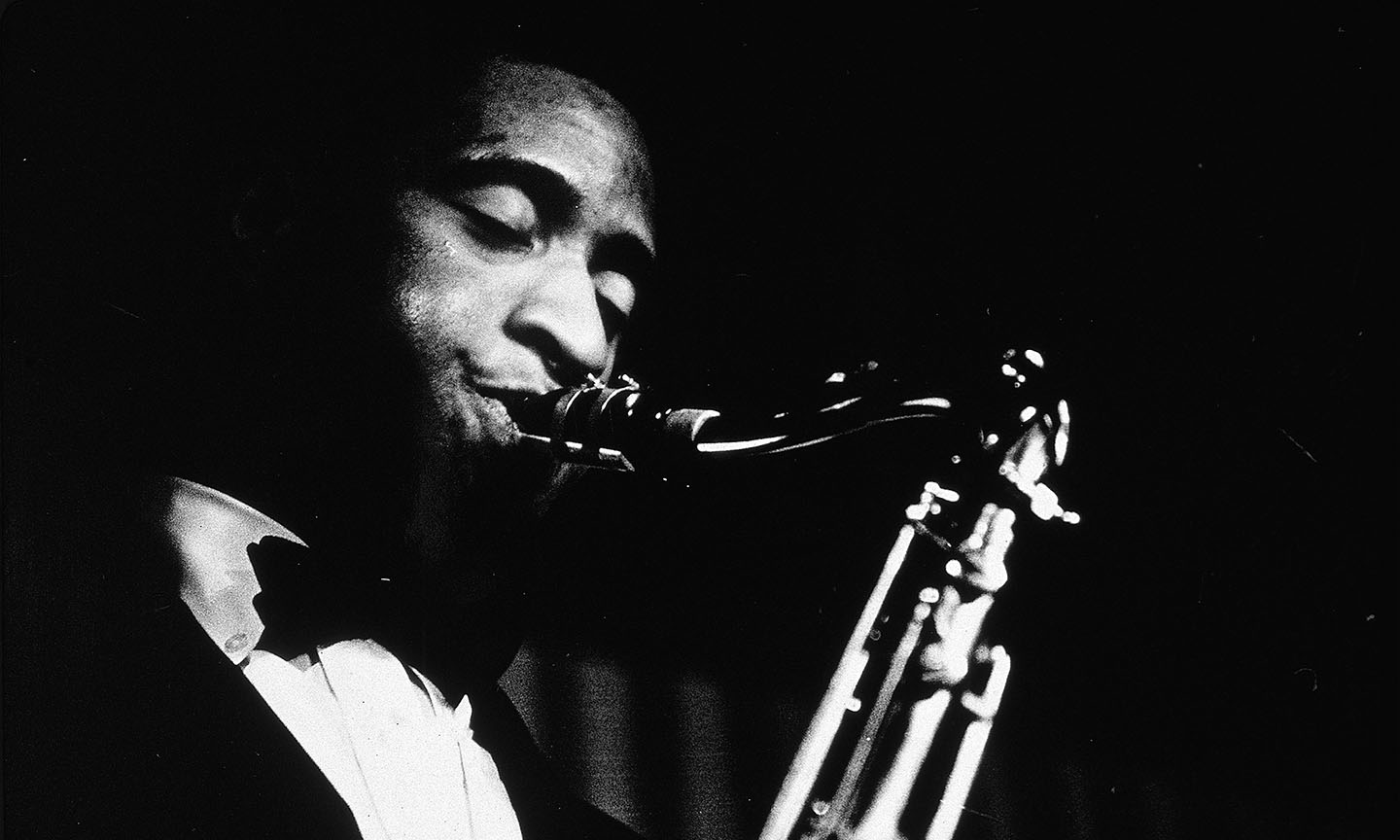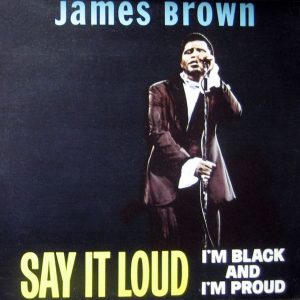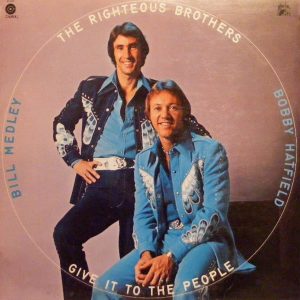The year 1957 was a significant one in the life and career of Walter Theodore “Sonny” Rollins. An outstanding tenor saxophonist noted for his commanding tone and endless ingenuity as an improviser, he was just 26 years old and had already been dubbed “Saxophone Colossus” by producer Bob Weinstock at Prestige Records, the saxophonist’s recording home since 1951. But his contractual obligations to Prestige expired in late 1956 and, rather than re-sign to the company for another long-term, potentially constricting recording deal, Rollins tried his hand as a freelance musician, committing himself only to album-by-album agreements. It was during this particularly fertile two-year period that he recorded four albums for Blue Note Records, one of the jazz world’s leading independent record labels.
The tenor saxophonist’s first post-Prestige session was for Blue Note and took place at Rudy Van Gelder’s Hackensack recording studio in New Jersey on Sunday, December 16, 1956. The resulting album was released the following year as Sonny Rollins. Reflecting on his short but productive alliance with Blue Note, Rollins tells uDiscover Music that his association with the iconic jazz label began when he was a teenage sideman. “I originally recorded for them when I worked with Bud Powell on The Amazing Bud Powell in 1949,” reveals Rollins. “That was my first encounter with Blue Note. I was just getting started in the business and that was one of my first recordings.” Rollins can be heard on tracks like “Bouncing With Bud” and “Dance Of The Infidels.”
The First Blue Note Session
What drew Sonny Rollins to Blue Note as a solo artist was his liking for the label’s co-founders. “I had a great fondness for the owners of Blue Note, Al Lion and Frank Wolff,” he says. “Al Lion was very enthusiastic about any jazz that he considered first rate. He was really just a gem to work with and was apt to agree with anything that the artist wanted to do. I had no ironclad contract with Prestige at that point, which would have forbidden me play with anyone else, so Blue Note hired me to do a record.”
The recording date was a quintet session that featured trumpeter Donald Byrd, pianist Wynton Kelly, bassist Gene Ramey and drummer Max Roach. The album featured four original tunes plus a bebop reconfiguration of “How Are Things In Glocca Morra,” a song taken from the 1947 musical Finian’s Rainbow. The latter exemplified Rollins’ penchant for using fairly obscure show tunes as vehicles for searing jazz improvisation.
“What drew me to those lesser-known tunes was my background,” the saxophonist explains. “As a child I went to a lot of movies and I listened to the radio a lot so that I was brought up on a lot of different American composers. I always loved their songs, especially the ballads, so it was quite normal for me to have a liking for a song like ‘How Are Things In Glocca Mora.’”
The Quintet
Six years Rollins’ senior, Max Roach – famed for his fluid, polyrhythmic drumming style – played a pivotal role on the album. He’d recorded with the saxophonist many times before and appeared on several of his landmark Prestige albums, such as 1956’s totemic Saxophone Colossus. “It was great playing with Max,” enthuses Rollins, recalling the legendary drums and percussion maestro. “He was an idol to me because he played with Charlie Parker and was a beloved figure in the community. All these young guys wanted to play drums like him, be like him, and even look like him, so Max was a big-time guy.”
The Sonny Rollins album is also distinguished by the glistening piano of Wynton Kelly, who would go on to find fame in the Miles Davis sextet, which recorded Kind Of Blue in 1959. “The fact that Wynton was not there is what I liked about his playing,” says Rollins, following this declaration with a mischievous laugh. “He was the perfect accompanist because he was unobtrusive,” he explains. “Whenever there was something to be played, he played it. Whenever there was the correct sequence to be played, he was there. So he was like the guy who was there and wasn’t there at the same time.”
Just to cause confusion for record buyers, Rollins’ next album for Blue Note was also titled Sonny Rollins, but later became known as Sonny Rollins Vol.2, to distinguish it from his first Blue Note album. It was recorded on Sunday, April 14, 1957, just a month after a session for Contemporary Records in California, which yielded the classic album Way Out West. That particular album showcased Rollins in a trio setting, but, for his second Blue Note outing, he fronted a larger ensemble: a sextet comprising, among others, the redoubtable Thelonious Monk on piano, who plays on Rollins’ versions of his tunes “Misterioso” and “Reflections.”
The Mentorship of Thelonious Monk
“Thelonious was different in that he was so unique, so singular,” says Rollins of the man that mentored him and helped to nurture his talent. “It was always different playing with Monk because you had to play like him. You couldn’t play something that didn’t have anything to do with his style, his approach and the things that he laid down, which meant that you couldn’t get away from them while you were playing. And also, those things couldn’t help but influence you.”
In fact, the saxophonist regards Monk as his greatest teacher. “I consider him to be my guru,” he says. “I learned a lot from everybody I played with, but Monk was a very forward-looking artist and we were very close friends. So I benefited a great deal from what he knew that I didn’t know.”
The drummer on Sonny Rollins Vol.2 was the formidable Art Blakey. “He had a great beat,” remembers Rollins of the man that was 11 years his senior and led The Jazz Messengers for many years. “It’s hard to describe how these drummers play but I know that Art Blakey was Miles’ favorite drummer. Miles and I were close enough that we shared those kind of deep, dark secrets, so that says a lot about Art Blakey.”
The Final Blue Note Session
Sonny Rollins’ third and final Blue Note studio session, Newk’s Time, was recorded on September 22, 1957, 15 days after his 27th birthday. The album’s title referred to the saxophonist’s nickname, Newk. “There was a great baseball player called Don Newcombe,” says Rollins, explaining how he acquired the name. “He was a pitcher for the Brooklyn Dodgers and a compadre of Jackie Robinson, who broke the race barrier in baseball. At that time, I had a facial resemblance to Don Newcombe. One day when I was in a cab with Miles Davis, I was wearing a baseball cap and the cab driver took me for Don Newcombe. After that Miles always called me Newk, and we kept up the pretense.”
Newk’s Time featured Rollins leading a quartet comprised of pianist Wynton Kelly, bassist Doug Watkins and dynamic drummer Philly Joe Jones, famed for his whip-crack snare sound. Arguably the album’s standout track is an engaging musical dialogue between Rollins and the drummer on a stripped-down version of the Rodgers And Hammerstein’s standard “The Surrey With The Fringe On Top.” “When I came up, Max Roach and Art Blakey were the alpha and omega of drummers,” says Rollins, “but Philly Joe Jones was a really good player too. He wasn’t Max and he wasn’t Art but he had his own style and had fantastic rhythm.”
Having a good drummer – one who was flexible, imaginative, rhythmically astute and could blend visceral power with a nuanced subtlety – was an important factor in aiding Sonny Rollins’ evolution as a saxophonist. “I’ve played with so many drummers that were mediocre or just so-so, but I needed a good drummer for my own development and to help develop my own ideas,” he reveals. “I was fortunate enough to have played with some of the best drummers in the modern jazz scene. I’d challenge them and they’d challenge me.”
The Final Blue Note Record
Sonny Rollins’ final album for Blue Note was his very first live record, A Night At The Village Vanguard, which captured the tenor saxophonist at a small jazz club located in New York’s Greenwich Village on Sunday, November 3, 1957. “It’s a very intimate place,” recalls the saxophonist of a venue that still exists today and was later used for memorable live albums by Bill Evans and John Coltrane. “I don’t remember it as being a very vociferous audience but they were great listeners at the Vanguard because the people there knew a lot about music. They were really jazz aficionados.”
The Village Vanguard residency was important for Sonny Rollins because, for the first time in his career, he would lead his own band; but it took lots of tweaking and different personnel to get the chemistry to his liking. “I used to be pretty ruthless,” he divulges. “I didn’t spare anyone’s feelings. I used to hire and fire with regularity – that was my trait. I was constantly auditioning guys. It was like, ‘OK, good, next!’” The veteran saxophonist laughs at the recollection of his younger, more combative self, though now feels twinges of remorse. “I’m not proud of that period. I think I might have been able to handle it better, but at that time I was really intense about things coming out right.”
Sonny Rollins’ residency at the Village Vanguard began a couple of weeks before sound engineer Rudy Van Gelder turned up with his recording equipment. The very first incarnation of Rollins’ Vanguard band was a quintet with trumpet and piano, though it only lasted a week. After that, Rollins dispensed with an extra horn player and brought in a fresh rhythm section, hoping that a quartet would serve his musical needs. It didn’t. Ultimately, he dumped the piano and stripped the band right down to a skeletal trio of sax, bass and drums.
The Village Vanguard Trio
Finally, he seemed to have found an ideal format for his self-expression, one that he had already showcased on his groundbreaking Way Out West album earlier in 1957. “I’ve played with many great pianists in my time but I felt more free and able to hear what I needed to hear when I played without a chordal instrument,” explains Rollins. “It was for my own development and creativity that I wanted to have just a rhythm playing behind me. I wanted to create the harmonic sequences that might be necessary for me to be me and show what I could do as an individual player. I felt the trio was giving me my best opportunity to show Sonny Rollins and express what I could do.”
Though the album was called A Night At The Village Vanguard, one of the tracks, a pulsating revamp of Dizzy Gillespie’s “A Night In Tunisia,” came from an afternoon matinee performance at the club, during which Rollins played with bassist Donald Bailey and drummer Pete La Roca. The pair weren’t recalled for the evening show, which made up the bulk of the final album. In their stead came Wilbur Ware and Elvin Jones. “I felt that Elvin and Wilbur allowed me to do something a little different,” says Rollins.
What excited Rollins about the evening trio was the possibility of playing with 30-year-old Elvin Jones, then a rising star in the jazz world. “I really loved Elvin’s playing,” says Rollins. “He was a great player. There was something that he did with a 6/8 rhythm that other people weren’t doing. Once you heard Elvin play it, you said, ‘Why isn’t everybody playing like that?’ So he was a very special player and one of my favorite drummers.”
Reflecting On The Blue Note Sessions
Looking back at his tenure with Blue Note, Sonny Rollins – who is very self-critical of his own work and famously took two sabbaticals away from the jazz scene in order to focus on improving his musicianship – is hard-pressed to pick a favorite recording. “I’m always looking for the faults in my albums, so I’m not a good person to think about what might be my best recording,” he confesses. “I’m always thinking, ‘Oh, gee, if I’d only done that, it would have been a better album.’” Having said that, Rollins believes that his own song “Sonnymoon For Two” – written to commemorate his first marriage – is a personal highlight of his Blue Note years. “I guess that would be my favorite track,” he says. “I like it because I think we got something going there which had some lasting value.”
Though he went on to sign exclusive contracts with RCA Victor and Impulse! in the 60s, and then, from 1972 onwards, spent 28 years with the Milestone label, Sonny Rollins holds Blue Note in high regard: “There was something special about Blue Note Records – the logo, the album covers – and then you had the unquestionable integrity of Al Lion. He was a very sincere person. He loved the music and definitely loved the musicians… and he wasn’t out to make money.”
Rollins also believes that Lion’s company, which, unlike some record companies of the day, gave their musicians paid rehearsal time ahead of the recording session, always put the musicians’ best interests ahead of its own. “Blue Note seemed to have a much more cohesive enterprise going on and it was all about the music,” he says. “And Alfred Lion gave me something which nobody else would do at that time; he gave me the publishing rights to ‘Sonnymoon For Two.’ Publishing was where the big money was to be made, but most jazz musicians didn’t know anything about the business aspect of recording. I respected Al Lion for doing that, which was another little cherry on top of the cake. I knew that he was an honest guy and respected him for his love of the music and how he created a much more congenial atmosphere for the musicians at Blue Note.”
Sonny’s Later Years
One of the last true living giants from jazz’s golden age, the much-decorated Sonny Rollins – who jokingly describes himself as being “on the wrong side of 88” – is no longer able to play his beloved tenor saxophone, due to respiratory problems which forced him to put it away for good in 2012. That, of course, is a tragedy, but Sonny Rollins – ever the sage and philosopher – doesn’t see it that way. At least not now, after he’s had time to acclimatize to his new situation.
A Guide To Blue Note: 10 Essential Albums You Must Hear
Blue Note “As Important As The Beatles Or Dylan” Says Don Was
Best Blue Note Album Covers: 20 Groundbreaking Artworks
“Originally, it was very, very difficult when I first couldn’t play,” he confides. “I was very distraught for a while but then I got it together and my interest in the afterlife was able to pull me through because I realized that there was more to life than what I wanted. Instead of lamenting the fact that I couldn’t play any more I said to myself that I should be very grateful that I had a great career. I’ve had a really beautiful life, really, despite all the trouble and hardships.”
And how would Sonny Rollins like to be remembered? “As somebody who was always trying to get better,” he says, without a second’s hesitation. “I realized how much there was that I could do, and I was always trying to get there. So that would be a true analysis of Sonny Rollins’ life: I was always trying to get better. I wanted to do the best that I could do as Sonny Rollins, whatever that was. The music gave me a vision of that – a glimpse of what it could be – every now and then on the few occasions when I had a great performance. But, boy, I had to keep practicing to get there.”
Though his saxophone is now silent, Sonny Rollins’ influence is still a potent one in jazz. His four albums for Blue Note, all recorded within the space of 11 months, show him at his magnificent best.
Looking for more? Discover the best jazz saxophonists of all time.
This article was originally published in 2019. We are re-publishing it today in celebration of Sonny Rollins’ birthday.




